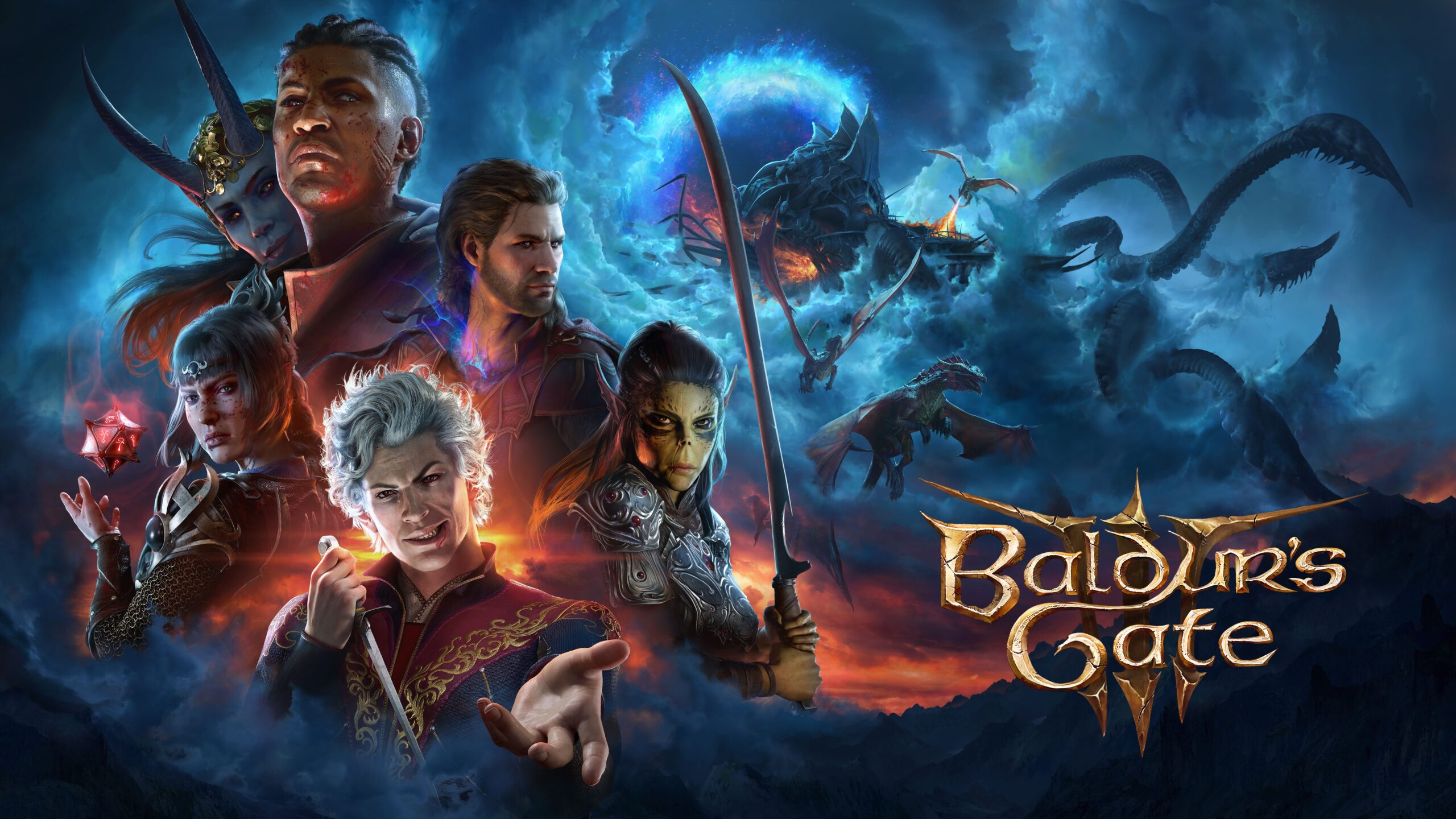
Provided by Grasshopper Manufacture
TRAVIS STRIKES AGAIN, AGAIN
LET US RAISE A GLASS
TO THE UNIVERSE.
* * *
No More Heroes lies to you. We were promised a razor-tight action game with vicious bosses and outrageous jokes, all set under a blanket of California sunshine. We were promised a new white guy opus from punk rock auteur Goichi Suda, whose previous work on narrative thriller Killer7 is held stratospheric by his cult fanbase. We were promised sex and drugs, vulgarity and ultraviolence, and at first it seems like Suda intends to hold up his end of the deal; the game opens with a goofy montage in which lead Travis Touchdown says all the right words and blows off all the right heads. Travis’s quest is made clear to us: he needs to kill the world’s ten greatest assassins, then take the number one spot for himself. Do that, and the hot French secretary may take notice of him. He seems well on his way already.
The fun doesn’t last. The action vanishes as quickly as it begins, and we are dropped into whatever “man cave” Travis is currently calling home, be it a perpetually begrimed motel room or a someone-will-definitely-get-murdered-out-here trailer in the woods. The intense score cuts to something more subdued, all slap bass and breezy synths. Shelves of dusty anime figures line the walls, and a shit-brown carpet covers the floor. A cursory look through his draws reveals gawky laser swords and porn magazines, while his wardrobe is filled with nothing but admittedly not-terrible T-shirts. His phone is arid, his only messages menacing invoices from the United Assassins Association and increasingly tetchy reminders to return his “how to talk to women” video tapes. His is a vile place; a gentrified Pringles tube; a student apartment decorated with both far too much and far too little money.
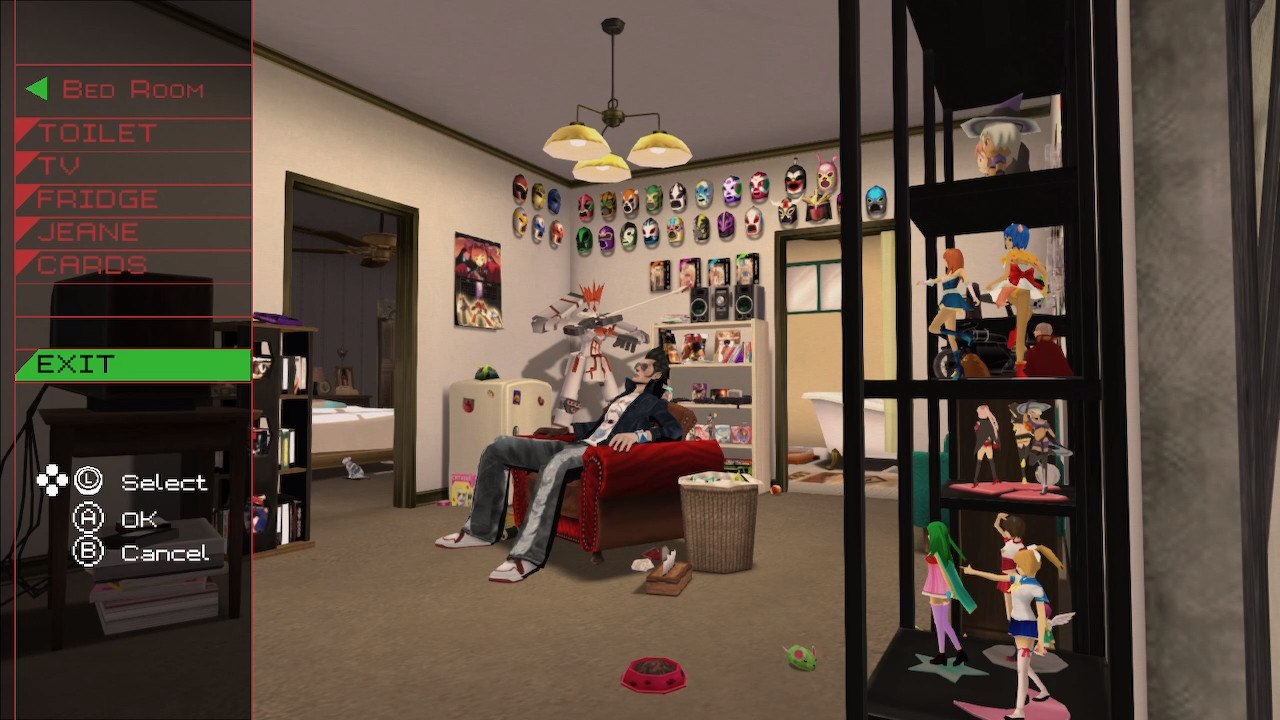
Things don’t improve when you step outside. We were promised an open world game too, yet for Travis the world consists entirely of the dingy video store he rents the aforementioned video tapes from and his apathetic cat. Travis spends hours mowing lawns and picking coconuts under the baking California heat, with none of this excruciating process edited out for the player. We are led to believe that Travis leads the electrifying life of a modern gangster, yet our miserable time in the open world proves that the opposite is true: in the slimy Santa Destroy, developer Grasshopper Manufacture have created a fictionalized Los Angeles more realistic than even Rockstar’s Grand Theft Auto V by making a place so impressively deprived of any culture or humanity it rivals even Milton Keynes.*
The promised violence does eventually return, but it’s fleeting, and never as cool as we expect. Without the fluidity of Devil May Cry or Metal Gear Rising, fights feel messy and repetitive, while the drab, blood-slick arenas only further this sense of the macabre. Enemies call out for their mothers, their ear-splitting screams drowning out the ghostly score. After creating enough corpses, you move onto that chapter’s boss. The ten ranked assassins Travis faces are all infinitely cooler than him, their world-weary monologues conveying a level of wisdom yet unreachable to our own hero. You spend a few minutes hitting each other, then Travis wins, and the “fun part” ends. Travis is sent back home like an ill-behaved child, and the cycle continues. Suda is laughing at you.
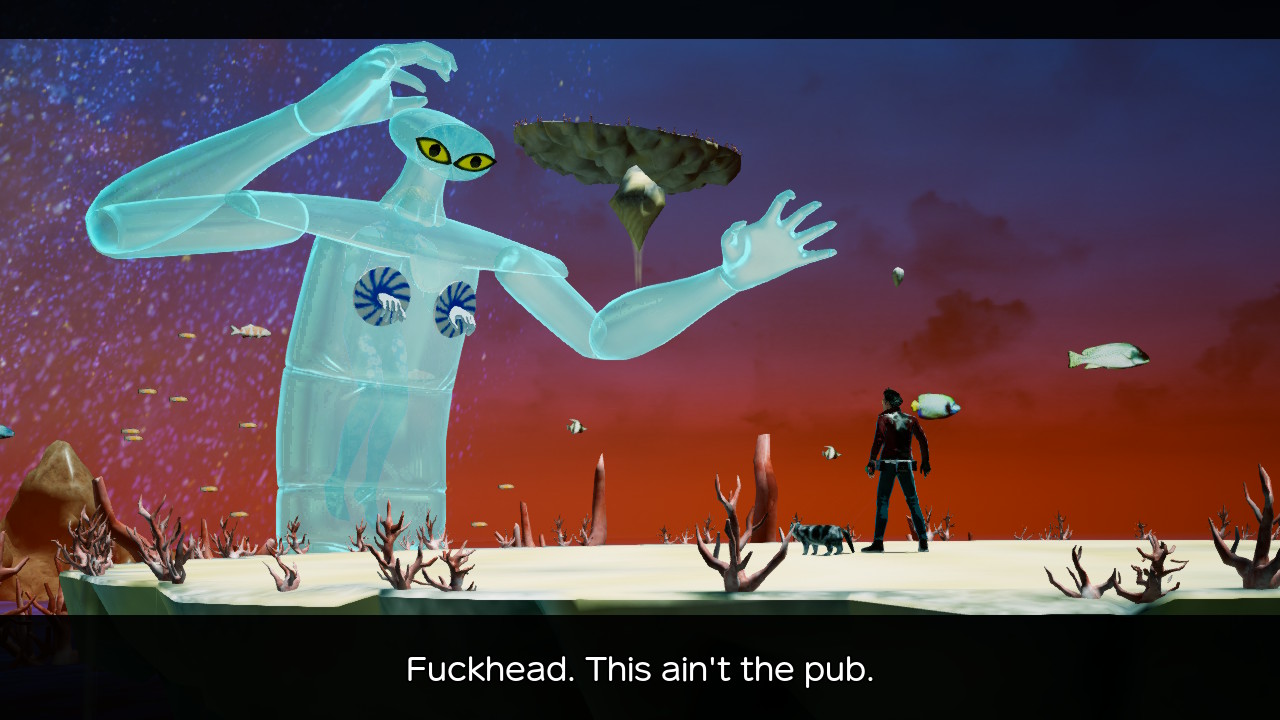
No More Heroes is defined by this awkwardness. In its refusal to glamorize or edit itself, we are forced to observe Travis sentry-like, and as a result we learn everything about him: every weakness, every moment of embarrassment, every character flaw. He can’t talk to women properly. He calls his enemies “fuckheads.” He shuffles forward in a stiff jog, and he often spends more time falling off his motorbike than he does riding it. The only thing he seems good at is taking nuclear dumps: by the end of NMH3 you will have s(h)at through at least thirty required toilet scenes.
Travis changes his tune. No More Heroes 2 doubles down on his harmful power fantasy, cutting the open world and adopting a wackier, more abrasive tone, yet it still feels as though he is lying to himself. NMH2’s vulgar action and worship of Travis may be closer to what the original game promised, yet as the people that mowed lawns for pocket change with him, we know that this isn’t really him, either. The superhero films dominating popular culture today are often treated with near-religious fervor, offering simple wish fulfilment to a wide-eyed crowd. Yet No More Heroes’ sole wish is to express, in as clear terms as possible, that “anime isn’t real, idiot.” Travis Touchdown is no superhero. He is incapable of being inhuman.
And so he disappeared.
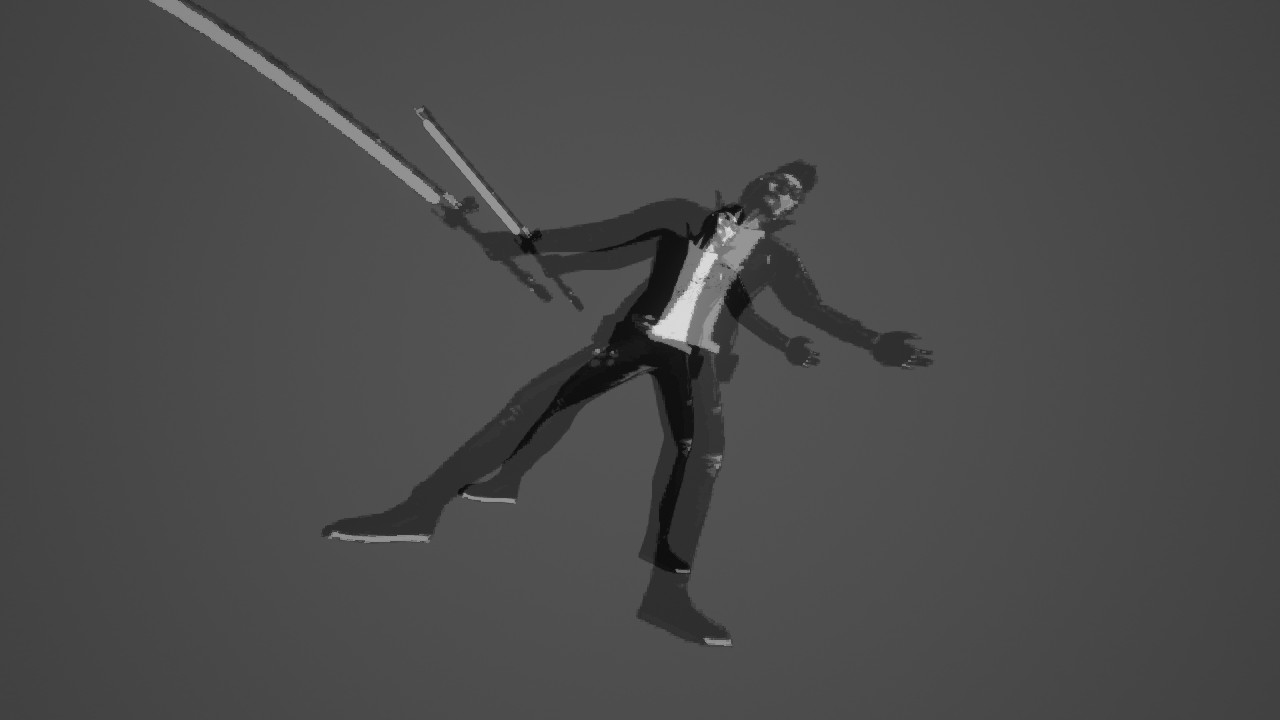
* * *
I’m writing this in the middle of production for Nintenjones, the documentary I’m making as part of my Film Studies coursework. The film focuses on the self-proclaimed “YouTube auteur” Braedon Jones, an otherwise ordinary man whose career as a media pundit forces him to adopt an incel-like persona to please his ever-present off-screen fanbase. A libertarian flag hangs limply from his walls; a ratty beard from his face. Jones’ videos are reprehensible; they’re loud and crass and wordy, as if someone spilled the contents of every FOX News anchor’s brain onto a plastic IKEA plate.
We learn that Nintenjones has a rival – of sorts. The Irate But Rational Gamer’s follower count – and capacity for vitriol – dwarf Jones’, and he is torn apart by this fact. Jones obsesses over his perceived opposite, replying to his every post with languid retorts and GIFs of capybaras. He gets nothing. He finds himself thinking up worse and worse replies, unsure if he even agrees with them himself. One day Jones gets a message back. He opens the Notifications tab of his Twitter page, and a single sentence glares back at him.
“Media consumption is not a personality trait.”
Nintenjones says nothing.
* * *
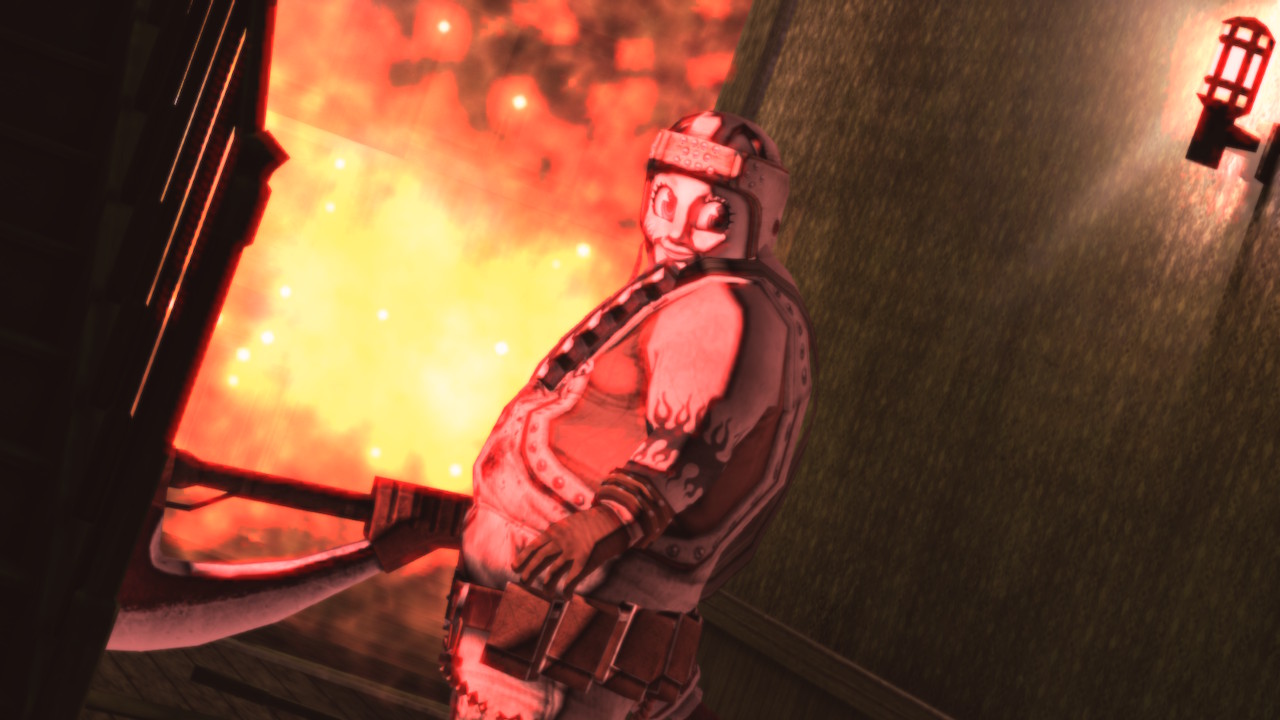
No More Heroes would not return for another eleven years after NMH2. In that time, Grasshopper Manufacture leaned further and further into their false public image, releasing increasingly crass and derivative works like Shadows of the Damned and Lollipop Chainsaw.
Suda and his punk aspirations were lost, the big-headed ideals of auteurism twisted to sell rude jokes to teenage boys. These were games made relevant only by controversy, despite their supposedly outlandish nature they did almost nothing new, a comfort blanket of excessive vulgarity and long-harbored perceptions about “Weird Japan.” Suda did have one lifeline, however.
Travis Strikes Again, an ultra-low-budget spin-off, slunk out onto digital stores in 2019, and it finally reveals our hero’s true self. The game feels equal parts like an epiphany for Travis and a personal confession from Suda. Its six levels aren’t nearly varied or interesting enough to cover its runtime, and as a result much of TSA consists of vast swathes of text. Sometimes Travis talks to himself; other times he yells at his cat, Jeane. The writing is thick, textured, dripping with swagger. People far smarter than me have analyzed TSA’s myriad messages themes in great detail, but most notable for me is its emotional honesty. Travis’ usual snark is gone here, replaced by a sense of mutual respect between author and reader. The story takes place far away from Santa Destroy, with conversations lit not by harsh street lamps but campfires and moonlight. Masafumi Takada’s original score, ghostly and uncomfortable, is remixed and repurposed in countless different ways, from glitch hip-hop to laid-back blues. Finally, after a mesmerizing conversation with his own hero on Mars, Travis gives us one final gift: a promise to return. Maybe things will turn out better this time.
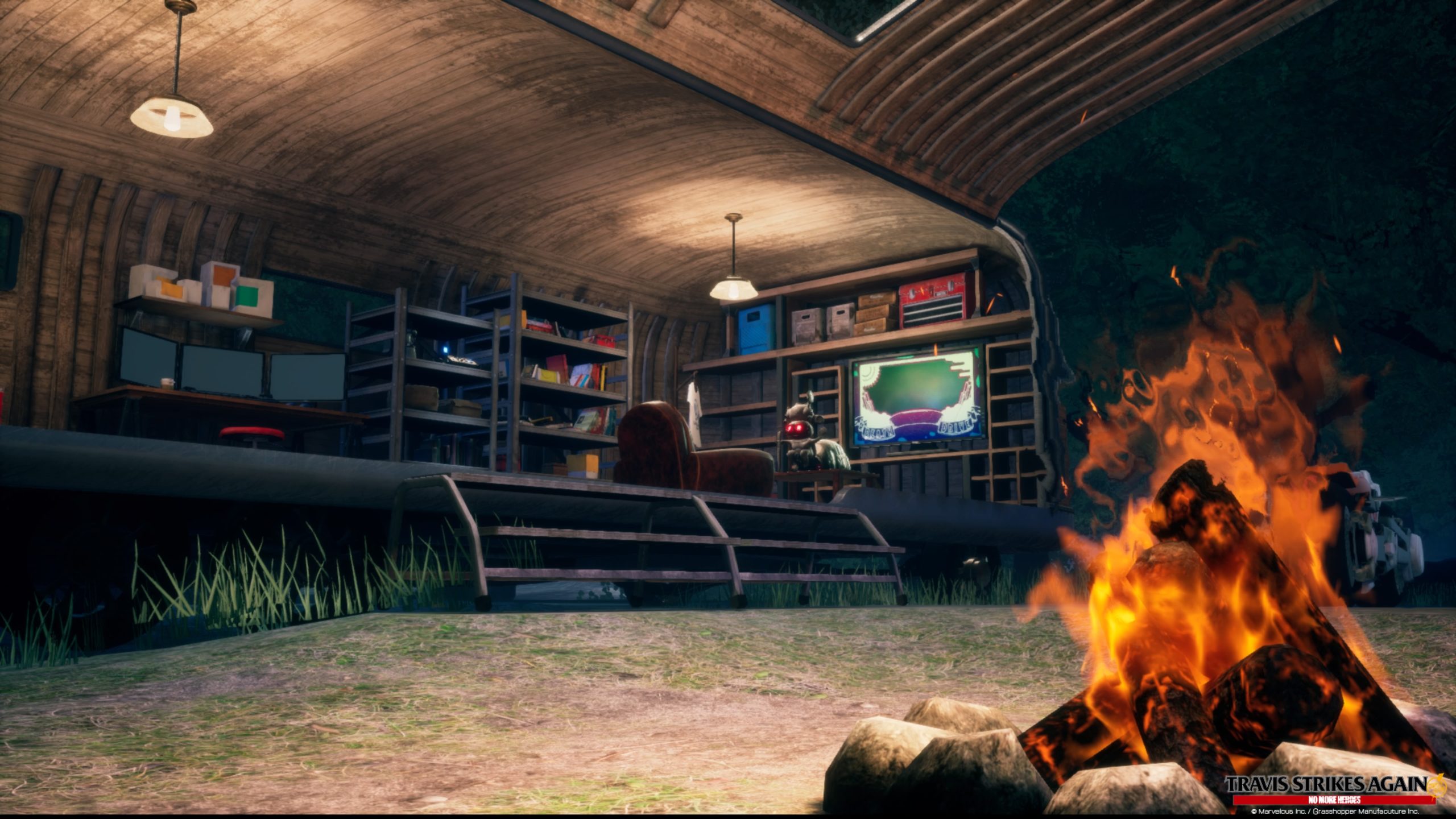
It is both a disappointment and a delight, then, that No More Heroes 3 experiments at every turn, with profoundly mixed results. It is incredible and awful, often at the same time.
As a conclusion to a cult series, No More Heroes 3 feels anaemic. In his own (excellent!) Letter last year, De’Angelo Epps attributed much of the same praise and meaning to the previous games, adding that the then-unreleased NMH3 would be “the series’ own Return of the Jedi.” In truth, the game feels a lot more like Spider-Man 3, a compliment I intend to be as non-backhanded as possible. Anyone who has played one of Grasshopper’s games will know that they end with an almost rude degree of abruptness, and despite effectively being a fifteen-hour ending sequence, NMH3 does nothing to buck this trend. Suda displays an active distaste for closure: new characters and plotlines are introduced seemingly at random while, much like the tuna mayo salad that is definitely festering in the back of Travis’ mini-fridge, old ones are left completely unresolved. The result of this almost childish approach is a story that feels more like a bucket of disconnected ideas than a carefully scripted sequence of pertinent events, and the game is made fascinating as a result.
With a collection of motifs this mismatched and underdeveloped, every player is certain to find something they’re drawn to, their very own enigma code. Many onlookers have pointed and laughed at the game’s haggard presentation and ramshackle appearance, and while it is true that several scenes appear as though assembled in Roblox, there are equally as many moments of undeniable visual conviction. Each boss has its own hand-drawn end screen, while the final enemy of each combat encounter now bursts open in a slow motion fountain of blood, the lone word “KILL!” accompanied by an explosive guitar riff.
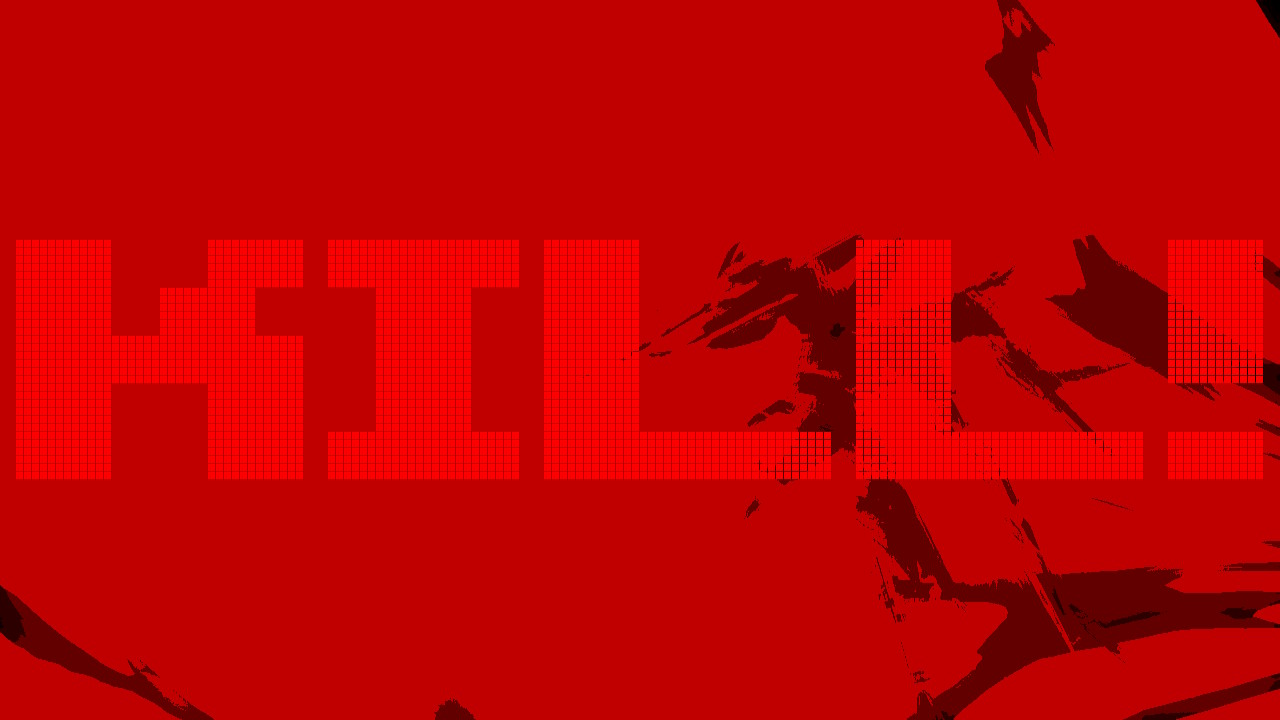
Perhaps my own favorite detail, however, was Travis’ new infatuation with routine.: NMH3 is now structured episodically, with opening and closing credits sequences bookmarking each ranked boss. In the previous games, everything was in service of these climactic showdowns, resulting in pacing that, in a potentially genius allegory for Travis’ sex life, was all build-up.
NMH3 aims to do things differently. By the end of the third game, you’ll have repeated the exact same train-fight-talk-to-boss-kill-boss process upwards of thirty times, and as such the promised “goofy boss fights” end up feeling less and less like the main attraction. Instead, it is the moment-to-moment existence we share with Travis that creates the most meaning. Each “episode” brings new story scenes, new odd jobs, new (again, surprisingly fashionable) T-shirts and new fights with cool aliens, all leading up to the match itself. There are also the parts where Travis sits down and talks with his friend about their favorite Takashi Miike films at the beginning of every episode. They’re life-changing..
NMH3 is defined by these moments of in-between. His living conditions are of course foul – where’s the duvet, Travis?! – yet there’s an undeniable sense of coziness as the games develop. It’s fun to explore the ruins of Santa Destroy, a once-gaudy monument to American consumerism now left barren and ghostly. It’s fun to see how the episodic formula changes, with some chapters including brief interludes of terse, tough guy-ish prose. It’s even fun to get into fights now, with Suda finally creating a game with a combat system that doesn’t make me want to write an angry letter of complaint to all parties every time I get knocked over.
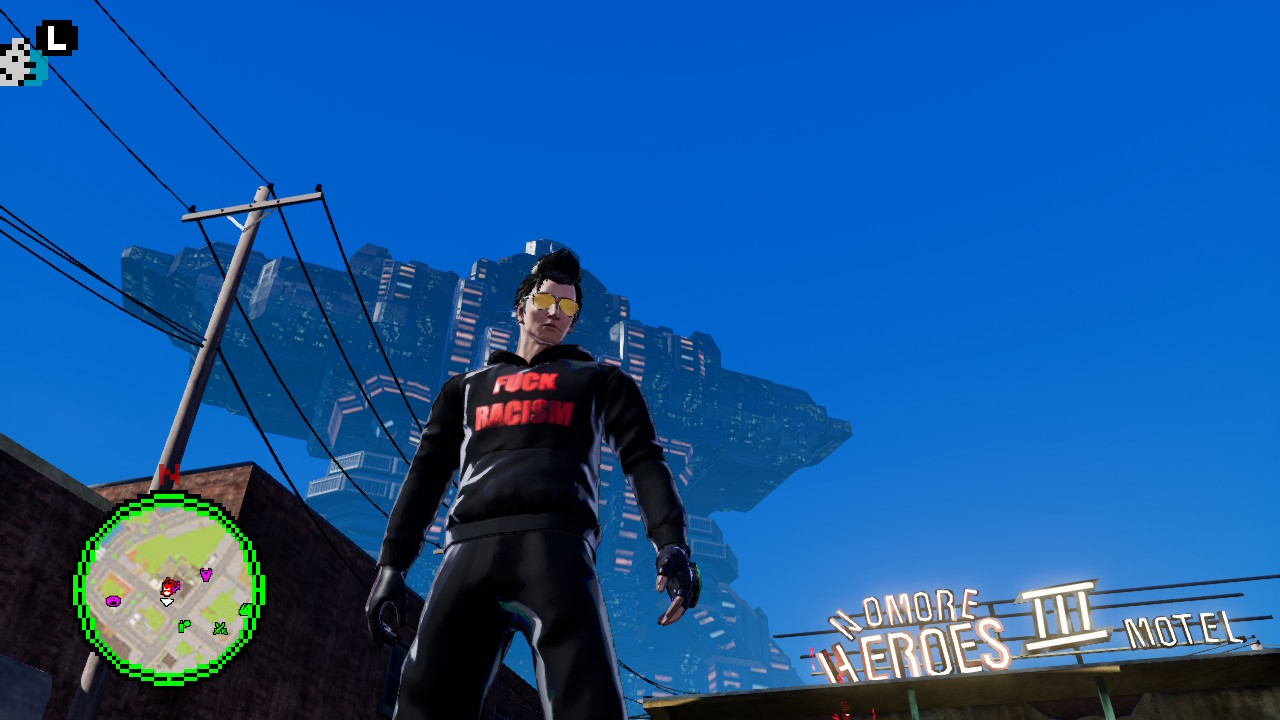
You may have noticed that the majority of this Letter does not actually discuss No More Heroes 3, the game I initially promised to write about. I did that on purpose.
Never has such an enormous gulf in quality between “why you’re here” and “why you’re not” conveyed such almost spiritualistic meaning. So many stories proclaim that life is about the journey rather than the destination, but only No More Heroes is willing to sacrifice its own conclusion to send that message. Like Travis Strikes Again before it, NMH3 feels closer, without cynicism, like getting to meet your older brother’s wizened friends, or a late-night conversation with the coolest person you know. You can’t help but admire the game’s confidence, whether misplaced or not, and in return for that faith you are treated to some of the most arresting imagery in any modern video game. NMH3 is, by conventional standards, “a bit shit,” and you’d have a hard time convincing anyone otherwise, but it feels so real, so unique, so much like a person that it moved me more than any other game in 2021.
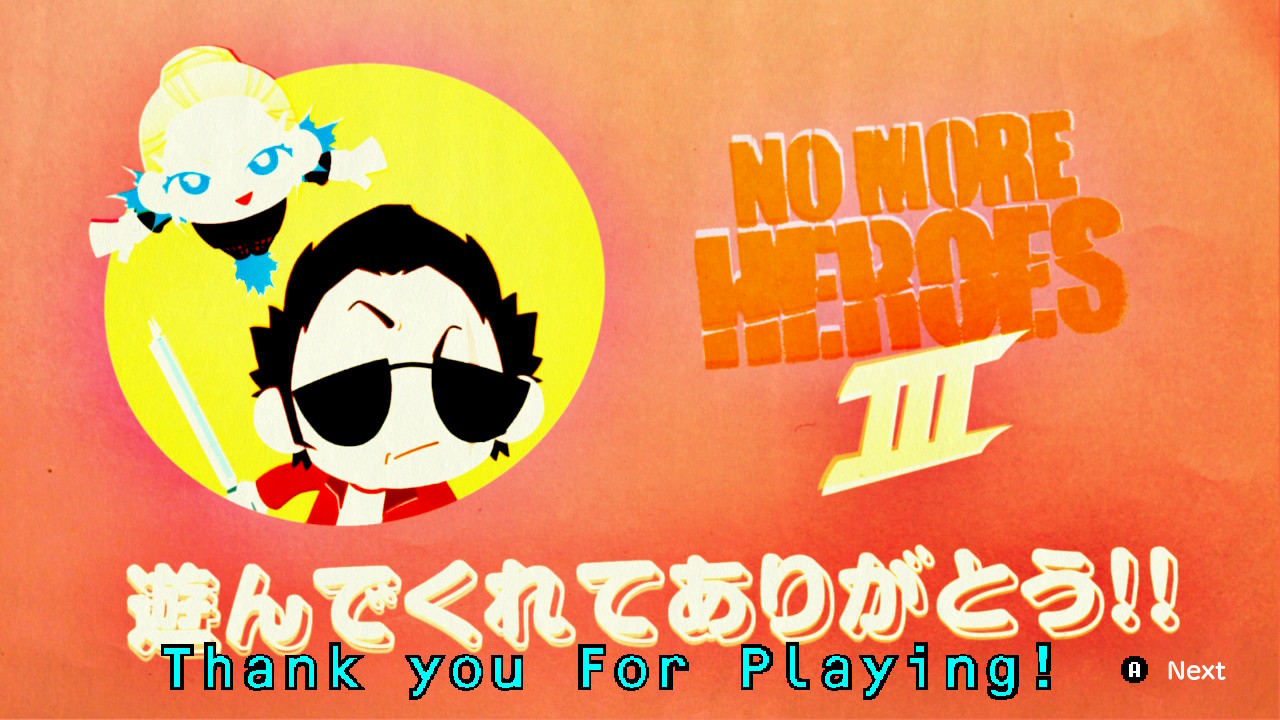
* please can someone make a Yakuza-like set in an English town thank you thank you





